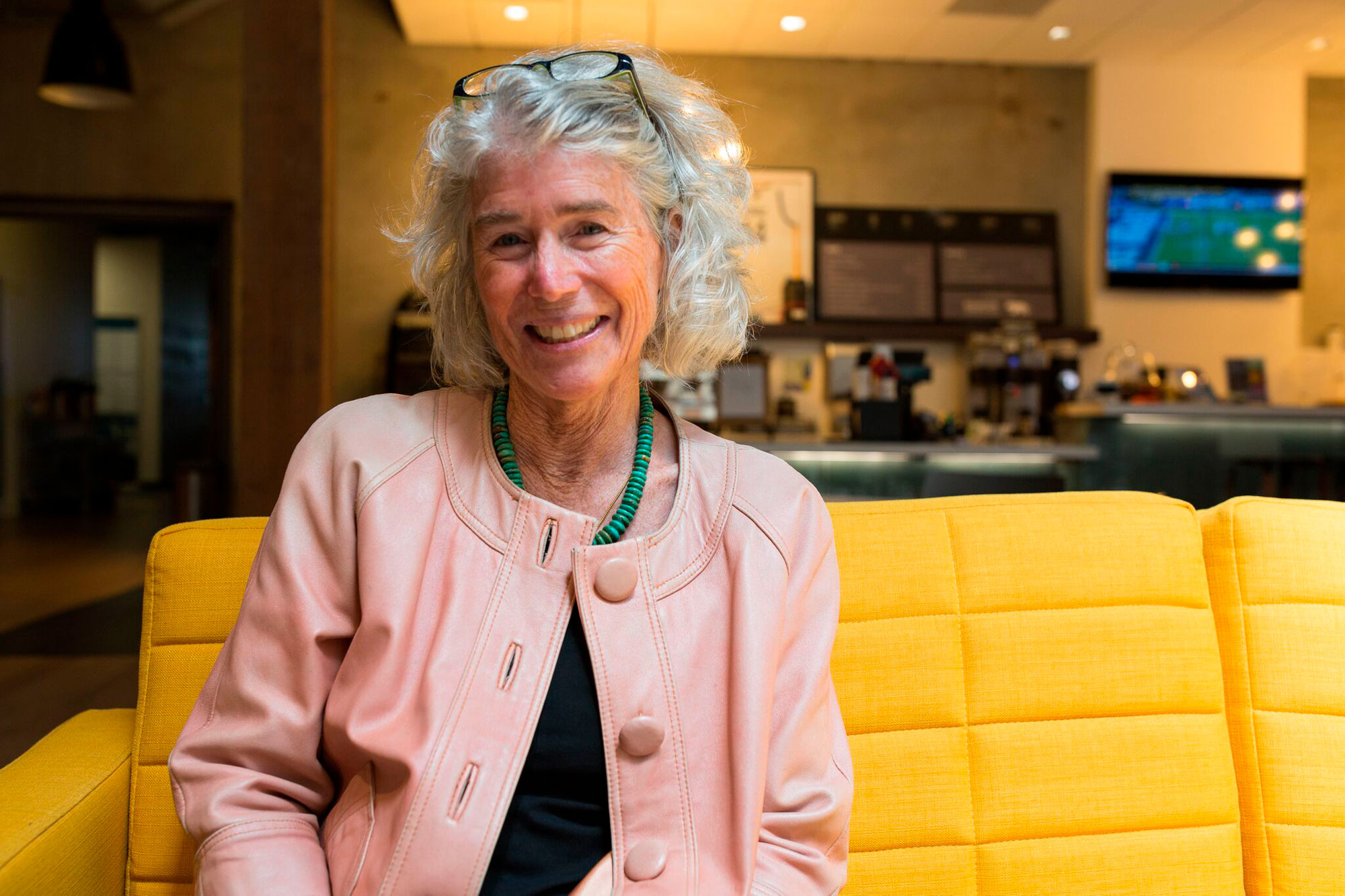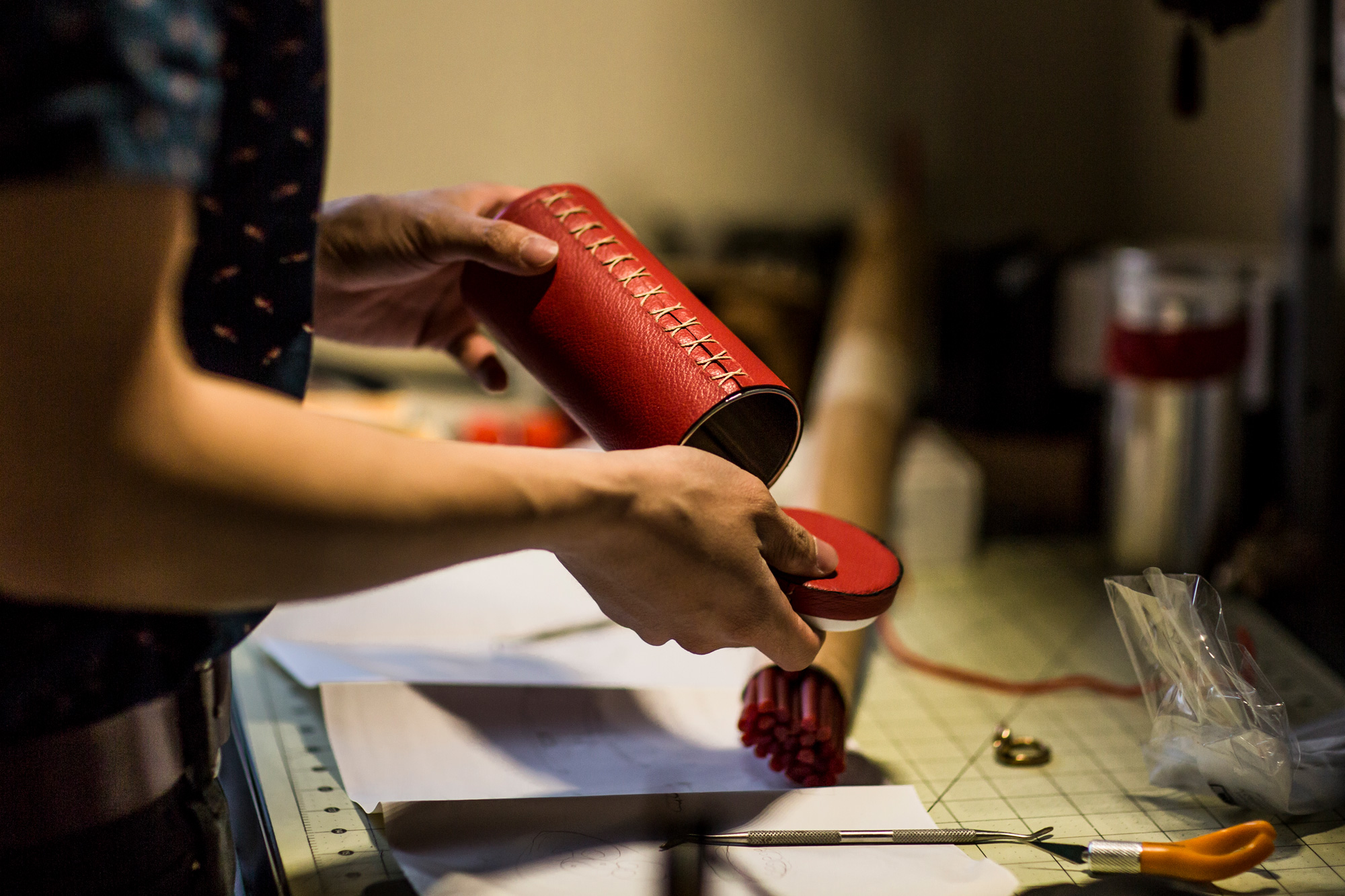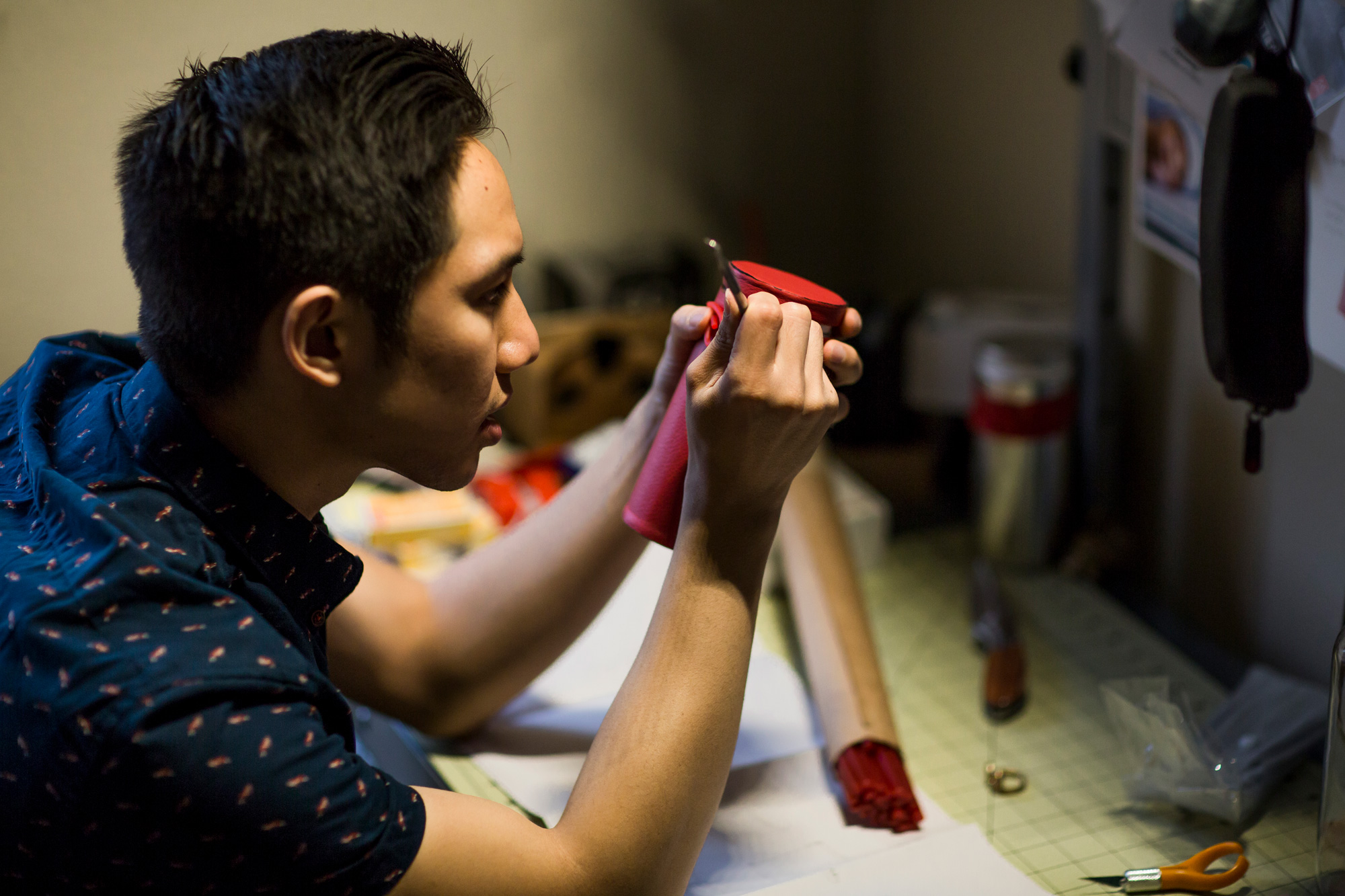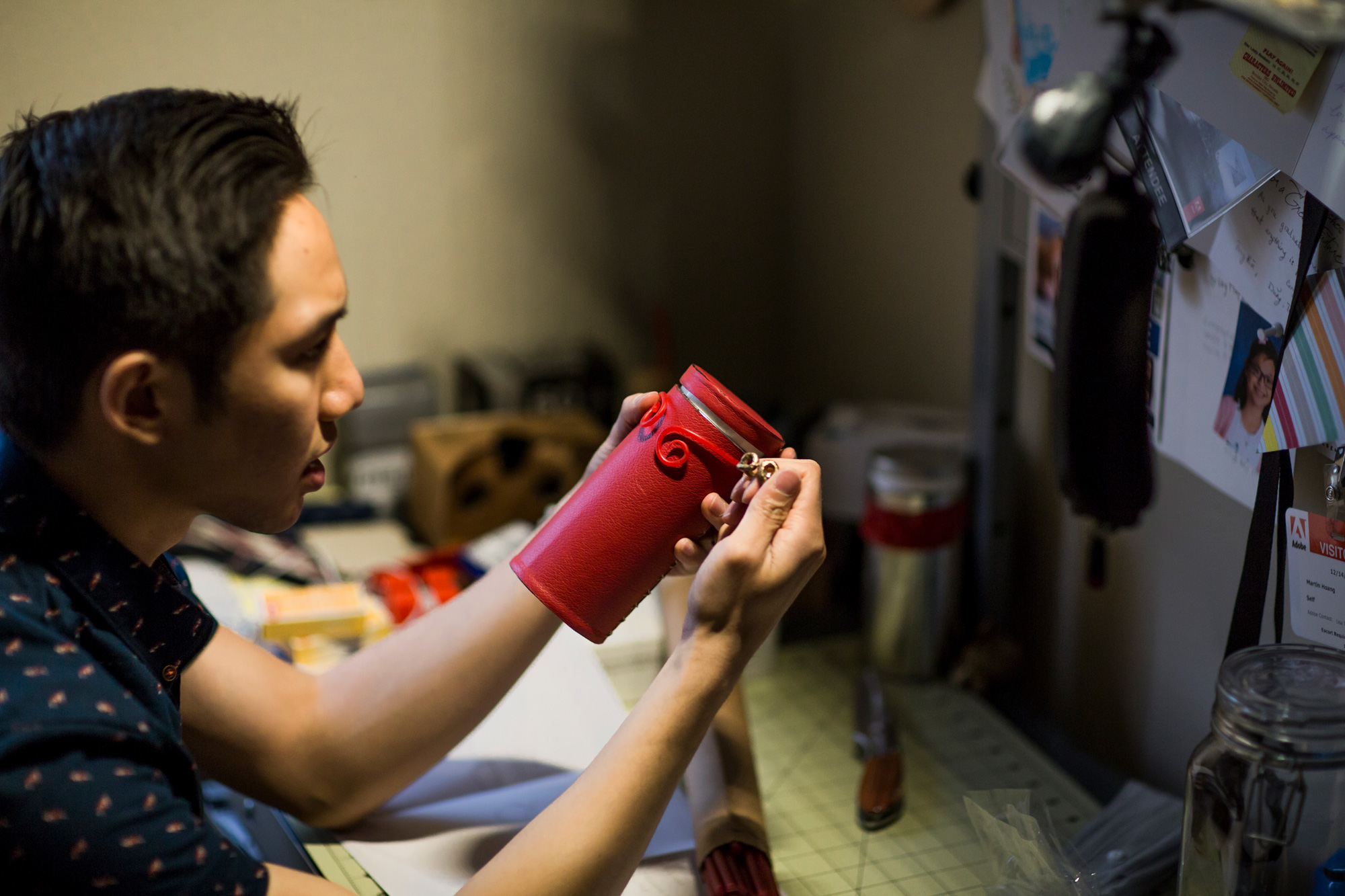19 Apr A Year with the ADAA, Part 2: Mentoring an ADAA Winner
Over 2017, Guild member and designer Theresa Whitehill has had an unusual relationship with software giant Adobe: that of both judge and mentor in their student Adobe Design Achievement Awards. A few months after judging the ADAA winners, her experience was extended when she was asked to mentor one of the student finalists. While the time commitment has posed a challenge, it’s one from which Whitehill has derived satisfaction and growth.
Q: Knowing how busy you are, how did you get roped into the free mentorship?
Late last year, a few months after the ADAA awards ceremony, ico-D [International Council of Design, who collaborates with Adobe on the ADAA] contacted me to ask if I’d be interested in mentoring one of the ADAA finalists. I had a gut reaction I’d do it, but I had to really think twice, since so many personal and professional projects have had to be postponed due to my busy schedule. But I was shaken by the election result, and I realized best thing I could do was to pass on my knowledge, even at the cost of burning the candle at both ends.

Theresa Whitehill, ADAA mentor and judge, as photographed by Martin Hoang.
Q: How were you paired with photography student Martin Hoang as your mentee?
As it turns out, Martin Hoang had asked for me. That surprised me. Martin’s been through schooling for design, and has gotten a lot of recognition from being an ADAA finalist, whereas I didn’t even graduate from college—I’m a bootstrap kind of learner. I wondered why such an educated designer would ask for me, and ico-D responded that it’s probably because I have a unique perspective.
Q: Did you remember Martin’s work?
While I was judging, I tended to not look at students’ profiles so as not to be influenced personally. But some student work really stood out, including Martin’s. Ironically, we didn’t award a first place in the photography category in which he had entries, since we felt none of the submissions quite warranted it.
Martin submitted two projects to ADAA. One was a photo journalism essay about the welding artist who created the Bay Bridge Troll [an 18-inch steel sculpture which was welded to a section of the Bay Bridge repaired after the earthquake of 1989]. The troll didn’t end up being part of the photo essay, and without that strong storyline, the judges felt that although it was well-executed and compelling photojournalism, it lacked the back story to understand the connection.
Martin’s second project was promotional photography for men’s clothing. He photographed himself leaping mid-air dressed in various incredible men’s fashion ensembles, and photoshopped himself out of the images, so that the clothing appeared to be animated. I was amazed by it, however, some of the judges had seen similar work, so to them it wasn’t as original as it was to me, a good example of how the breadth of experience among the judges was helpful when judging in such a compressed time range. While both projects were beautifully executed, neither had the original conceptual edge that the judges overall felt would warrant a first place prize. Martin was designated a finalist for the Bay Bridge Troll project, so that satisfied me because it was well-deserved.
Q: So what is Martin’s mentorship project?
His idea is to take a tin for holding tea and reimagine it so that it looks like the staff of The Monkey King (Sun Wukong) from the Buddhist pantheon. The Monkey King is a misunderstood trickster turned demi-god, and the subject of a lot of anime films – sort of like Hercules and his ascension to godhood. At first, I questioned the scale of the tea tin, asking Martin whether such a long staff would be satisfying to him in a shorter proportion. Martin explained to me that the Monkey King’s staff can collapse down to a small size, so the tea tin made sense as part of the story. Martin’s idea is to wrap the tin in leather and create bronze filigrees so that it matches the look and design of the Monkey King’s staff. That means he has had to learn or push his knowledge of a lot of technical and craft skills, such as wrapping and sewing leather, and metal casting, in order to complete the project to his satisfaction, so it’s quite ambitious.

Hoang wrapping and sewing the leather around the tea tin.
Q: That seems to be a big stretch from photography; does that come into play?
Photography is not his only area of study and experience; he has great design skills and was familiar with metal casting from his education. It’s a great project for a mentorship, because it’s much riskier and out of the box. The concept is wonderful and imaginative, and it’s forcing him to learn new skills. He’ll photograph the final product, and that’s where those skills will come to bear.
Q: This also falls outside of your area of expertise. What kind of technical advice have you been able to give him?
Like Martin, I understand how to learn a new skill that is required for a job; I’m an on-the-job learner and always have been. You break it down and you find the resources that you need to do the next step; if the software doesn’t do what you need it to do, you find a way to get in through the back door. It’s learning how to learn, which you can apply to almost anything. So I’ve had him explain to me how he plans to approach the several crafts he needs to learn to be successful at this and played devil’s advocate to help him refine his approach. Initially, he planned to do just one bronze casting, and I was able to advise him to use an initial bronze pour at his school as a trial run so that he could troubleshoot any issues and revise in time for the final pour.
As it turns out, some real technical challenges came up. He found that he couldn’t get the detail he wants for the filigree using the bronze-casting facilities at this school. For that, he needs a goldsmith’s foundry, which will permit him to pour the molten metal while the mold is spinning; this allows much finer, thinner details. He’s now looking for a goldsmith who would be interested in helping him with his project.


Applying wax to the leather to create the molds for the bronze filigree.
Q: What are the terms of the internship?
The internship goes for six months, and we were asked to make a minimum commitment to a one hour-long conversation per month. We also email between sessions. Other than that, there are no expectations on the scope or type of project.
Q: What do you think is the biggest contribution you can make to Martin’s development?
Through the ADAA program, Martin got a job at Adobe. It’s a great opportunity, but it can be a super stressful environment due to the high level of work expected. So I started checking in with him between our monthly sessions. I see stress like an ocean wave — you either get dumped, or you get up on that wave and ride it in to shore. How you deal with stress will determine your longevity in the business—how far you’re able to go, what great projects you get to work on. I want him to learn to not be afraid of stress, but attack it and learn how to ride it. When I check in with him, it’s often with “How’s the surf?” and he might answer, “Surf’s up!”
Martin is very used to achieving through hard work, but there is a part of him that needs to be psychologically prepared for failures now and again; they are an inevitable byproduct if you are seeking to achieve. He’s ambitious and wants to be in a position where he’s driving a concept; he still needs experience working with other people. But he’ll get there if he pays attention.
Q: Have you gotten anything for yourself out of this mentorship?
I’ve found my conversations with Martin have fed my own creativity. Explaining my creative process has been really helpful and has helped clarify my thinking. For a while I had dropped a lot of projects that weren’t “billable” simply because I couldn’t justify fitting them in, but found that recently I have said “Yes” to many of these again. I’ve realized that these projects that might be seen as more peripheral were actually feeding my core reason for designing, and, amazingly everything is going very well in spite of this “over-commitment.” I’m more jazzed; I’m have more energy.
Martin Hoang’s ADAA projects
Postscript April 2018
While their formal mentorship ended in the spring of 2017, Theresa & Martin continue to stay in touch via LinkedIn. They got a chance to meet in person for the first time in August of 2017 when Theresa went down to San Francisco to judge the Adobe Design Achievement Awards for the second year to find that Martin was the official Adobe photographer for the judging session!
Martin has continued to work on his project of reimagining a tea cannister as the staff of the Monkey King. He hit a roadblock with the work when the bronze foundry to which he has access couldn’t cast the fine detail that he envisions for the outside filigree that will wrap over the leather-encased tin. With Theresa’s help, he did some research and found that he needs the finer capabilities of a jeweler’s centrifuge caster for the level of detail he wants. Theresa suggested that this article might reach someone who could put Martin in touch with a jeweler interested in helping him finish his project.
So we’re putting the word out through our graphics community for a jeweler with a heart of gold. Know anyone who fits that description? Martin can be reached at hello@martinhoangdesign.com.
All photographs © Martin Hoang. Used with permission.
